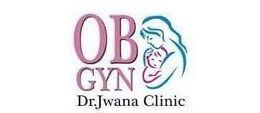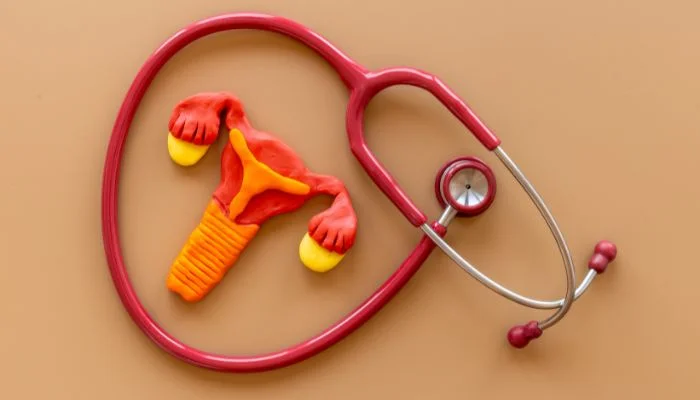Dealing with a bulky uterus with multiple fibroids involves a multifaceted approach that includes diagnosis, treatment options, lifestyle changes, and possibly surgery. Uterine fibroids, also called leiomyomas or myomas, are benign growths that typically develop in the uterus during a woman’s reproductive years. They can vary in size, number, and location, and their presence can lead to a condition known as a bulky uterus, where the uterus enlarges due to the growth of multiple fibroids.
Understanding Uterine Fibroids and Bulky Uterus
Uterine fibroids consist of muscle cells and other tissues that develop within the uterine wall and its surrounding areas. They are classified based on their location:
Submucosal fibroids grow into the uterine cavity.
Intramural fibroids develop within the muscular uterine wall.
Subserosal fibroids extend outward from the outer surface of the uterus.
Also Read: Are intramural uterine fibroids dangerous?
A bulky uterus can result from a combination of these types of fibroids, leading to symptoms such as heavy menstrual bleeding, prolonged periods, pelvic pain, frequent urination, and infertility. While some women may be asymptomatic, others may experience significant discomfort and complications.
Diagnosis
The diagnosis of multiple fibroids in uterus typically involves:
Pelvic Examination: A doctor may feel the presence of fibroids during a pelvic exam.
Ultrasound: Ultrasound utilizes sound waves to generate an image of the uterus, determining the size and position of fibroids.
Magnetic Resonance Imaging (MRI): Provides detailed images of fibroids and can help in planning treatment.
Hysterosonography: An ultrasound scan that involves injecting saline into the uterus to get clearer images.
Hysteroscopy: A procedure where a small, lighted telescope (hysteroscope) is inserted through the cervix into the uterus to examine its interior.
Treatment Options
Bulky uterus with multiple fibroid treatment
Bulky uterus with multiple fibroid treatments depends on the severity of symptoms, the size and location of the fibroids, the patient’s age, and their desire for future pregnancies. Here are several treatment approaches:
Medication
Hormonal Treatments: These can help regulate the menstrual cycle and reduce symptoms like heavy bleeding and pelvic pressure. Choices include birth control pills, progestins, and medications known as Gonadotropin-releasing hormone (GnRH) agonists. GnRH agonists can shrink fibroids but are typically used short-term due to side effects.
Non-Hormonal Medications: Nonsteroidal anti-inflammatory drugs (NSAIDs) can help relieve pain, while antifibrinolytic agents like tranexamic acid can reduce heavy bleeding.
Iron Supplements: If heavy bleeding has led to anemia, iron supplements can help replenish iron levels.
Non-Invasive Procedures
Uterine Fibroid Embolization (UFE): This procedure blocks the blood supply to fibroids, causing them to shrink. It’s minimally invasive and can be an option for women who want to avoid surgery.
MRI-Guided Focused Ultrasound Surgery (FUS): This technique uses high-intensity ultrasound waves to destroy fibroids. It’s a non-invasive option that offers a quicker recovery.
Minimally Invasive Procedures
Laparoscopic or Robotic Myomectomy: Involves removing fibroids through small incisions. This procedure preserves the uterus and is suitable for women who wish to have children.
Hysteroscopic Myomectomy: Fibroids that extend into the uterine cavity are removed using a hysteroscope inserted through the vagina and cervix.
Endometrial Ablation: Destroys the lining of the uterus to reduce heavy bleeding, but it’s not suitable for women who wish to become pregnant.
Traditional Surgical Procedures
Abdominal Myomectomy: A more invasive procedure involving an incision in the abdomen to remove fibroids. It’s effective for larger or numerous fibroids but requires a longer recovery time.
Hysterectomy: The removal of the uterus is a definitive solution for fibroids and is typically considered when other treatments have failed or are unsuitable. It ends the ability to bear children and requires a significant recovery period.
Also Read: How to deal with fibroids during pregnancy?
Lifestyle and Home Remedies
Apart from medical treatments, implementing specific lifestyle adjustments and home remedies can aid in symptom management :
Healthy Diet: Consuming a well-rounded diet that includes plenty of fruits, vegetables, whole grains, and lean proteins contributes to maintaining overall health. Reducing red meat and increasing green leafy vegetables may have beneficial effects.
Regular Exercise: Physical activity can help manage symptoms by improving blood flow and reducing weight, which may alleviate pressure on the uterus.
Stress Management: Practices like yoga, meditation, and deep breathing exercises can help manage stress, which may exacerbate symptoms.
Heat Therapy: Applying a heating pad to the pelvic area can help relieve pain and cramping.
Monitoring and Follow-Up
Regular monitoring and follow-up with a healthcare provider are crucial for managing a bulky uterus with multiple fibroids. This includes:
Regular Check-Ups: Periodic pelvic exams and ultrasounds to monitor the size and number of fibroids.
Symptom Tracking: Keeping a diary of symptoms can help assess the effectiveness of treatments and make necessary adjustments.
Lifestyle Adjustments: Continuing with healthy lifestyle practices to manage symptoms and improve overall well-being.

